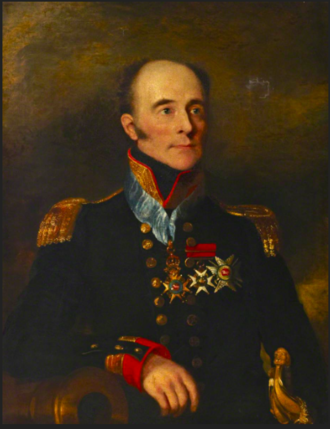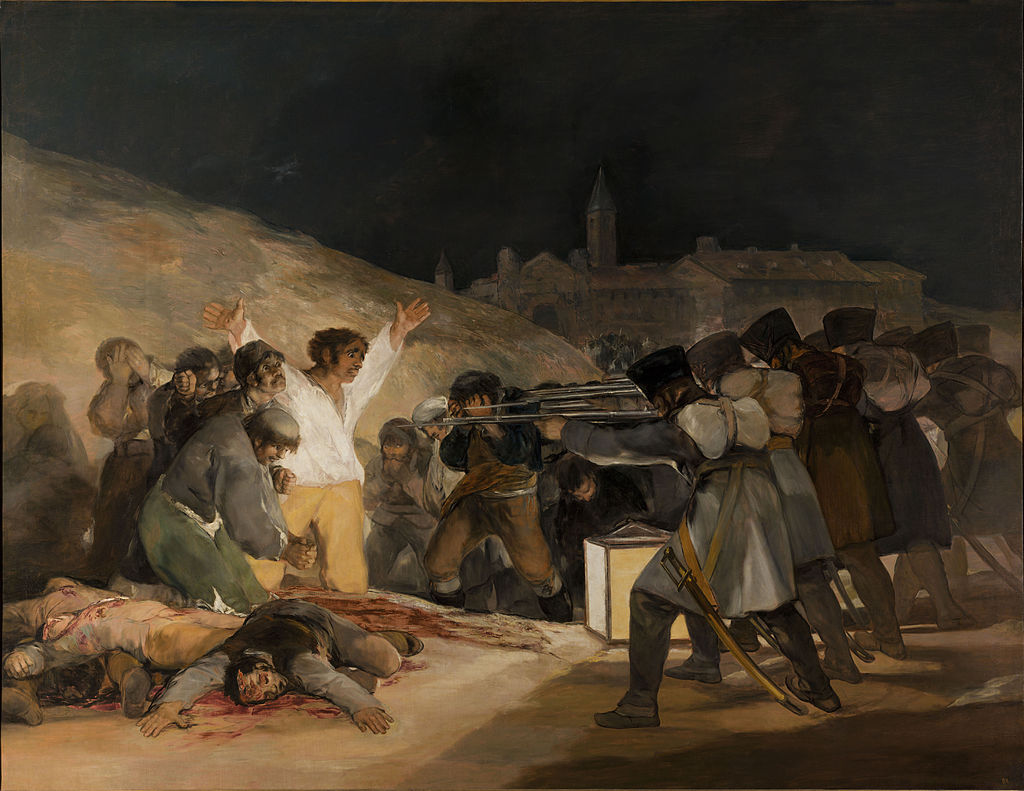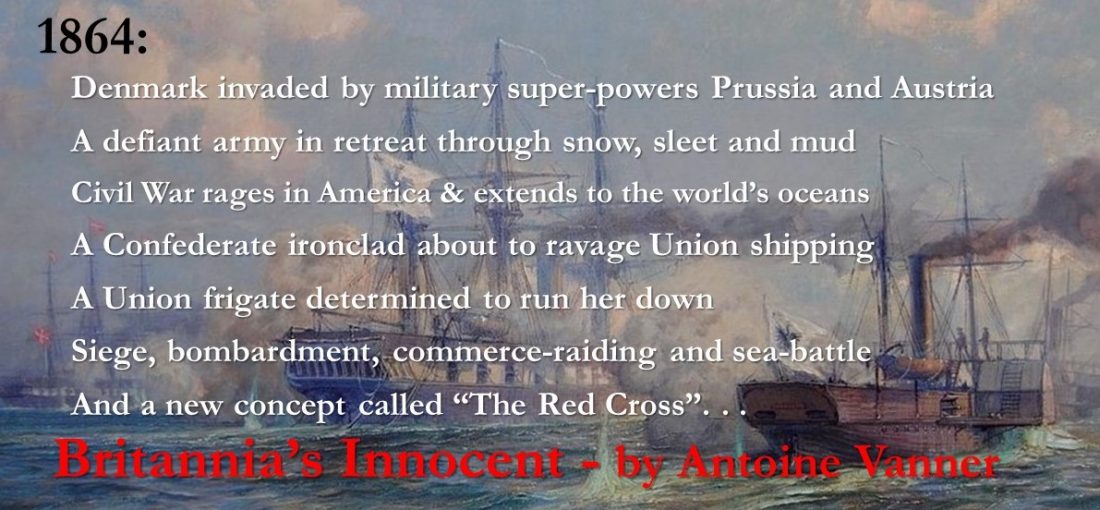HMS Redwing – odds of one to seven, 1808

Sir Thomas Ussher
Sir Thomas Ussher (1779–1848) was one of the younger generation of Royal Navy officers who served in the Napoleonic wars and who, though they advanced in many cases to coveted Post-Captain rank were denied the opportunity of greater commands and responsibilities after the end of the Napoleonic Wars in 1815. With an enviable record of successful and daring action since joining the navy at the age of twelve in 1791, Ussher saw almost continuous action in those twenty-three years. He was promoted “to post” in 1808 as the result of an action, described in more detail below, when he was in command of the brig HMS Redwing. Despite his record as a fearless and aggressive officer, he was not to achieve Read-Admiral rank until 1846, two years before his death, when he was serving as Commander of the Coast of Ireland Station, with headquarters at Cobh (then called Queenstown).
In 1806, with an enviable record of recent success in raids aimed at destroying enemy shore-batteries, Ussher was given command of the Cruizer-class brig-sloop HMS Redwing. These small craft – 100-ft long and 380 tons – of which some 110 were built from 1797, packed an enormously powerful punch for their size due to their armament of carronades. An added advantage, when the Navy had such a high demand for manpower, was that these vessels needed relatively small crews, usally just under a hundred men. HMS Redwing, new when Commander Ussher took her over, was typical of the class, armed as she was with sixteen 32-pounder carronades and two 6-pounder long guns as bow chasers. Murderously effective as the carronades could be at short range, they demanded expert ship-handling to bring the vessel they carried close in, possibly in the teeth of bombardment by enemy weapons of greater range.

The classic brig-of-war: fast, heavily armed for her size, efficient
Spain was France’s still ally in this period. Based at Gibraltar, HMS Redwing operated successfully along the Spanish coast through 1807, wreaking havoc on local maritime traffic and driving several traders and privateers ashore. This continued into 1808 and at dawn on May 7th she was cruising six miles offshore, south east of Cape Trafalgar. A Spanish convoy of twelve enemy merchant ships was spotted. It had a heavy escort – seven armed vessels. Two were schooners, the Diligente and Boreas, each armed ominously with two long 24-pounders and two 8-pounders. A total of three long 24-pounders, two 6-pounders, and one 36-pounder were carried by three gunboats and there were two smaller weapons.

A Royal Navy armed Schooner off Malaga – the Spanish Diligente and Boreas would have been generally similar.
Painting by Thomas Buttersworth (1768 – 1842)
On any rational basis HMS Redwing’s chances could have been judged close to zero in a combat with these vessels. If well handled, their long-guns should have been capable of blasting her to matchwood before she could get close enough to bring her carronades into action. A further consideration was that the sea was calm and the wind slight, diminishing HMS Redwing’s ability to manoeuvre nimbly. Regardless of this, Ussher gave orders to sweep behind the enemy, cut off their retreat to leeward, and close.
Rationality was not however to come into it as far as the Spanish commodore – in the Diligente – was concerned. Rather than stand off and subject HMS Redwing to long range fire, as might have given him almost certain and immediate victory, he advanced to meet her with all his ships in line abreast and with the apparent intention of boarding. This was playing into Ussher’s hands. Conscious that everything would depend on his first blast of gunfire, he directed that all Redwing’s weapons be loaded not just with round shot by with grape, cannister and bags containing 500 musket balls each. In effect Ussher was making a massive shotgun of every carronade. He ordered initial aiming at the Diligente, clearly the Spanish Commodore’s vessel, but fire was to be held back until the range was point blank. HMS Redwing’s boarding nettings were dropped as an inducement to the Spaniards to draw close in. An element of psychological warfare was now also applied, HMS Redwing’s crew being ordered to give three cheers (always “hearty”) to convey absolute confidence and determination. The effect was so daunting the crews on the Spanish rowed-gunboats, which were coming forward with the Diligente and Boreas, that they immediately began to back water until their Commodore again urged them on.
Ussher allowed the Spanish vessels to advance “within pistol-shot” before ordering HMS Redwing to open fire simultaneously with all she had. The result was devastating. One shot struck the Diligente at the water line, cutting her open fore and aft, so that after giving one or two heavy rolls, she turned over and went down with all on board. The same happened the Boreas but as she sank Ussher, clearly a humane man as well as a brave one, dropped his only boat to save as many of the Spaniards in the water as possible, displaying a flag of truce to cover the effort. The Spanish gunboats continued their attack however and Ussher was forced to recall the rescuers.
The sinking of a warship was a relatively rare occurrence in this period – unless they caught fire, wooden vessels could take a devastating pounding and still stay afloat (often to be surrendered, repaired and taken into the victor’s navy for years of further service). Unless heavy damage was sustained at the water line – “between wind and water” in the parlance of the time – the chances of a sinking were low. That Ussher managed to despatch two enemy ships in this way within such a short time may well have been unprecedented.

“A Felucca off Gibraltar” – by Thomas Chambers (1808 – 1869) – similar perhaps to that which escaped from HMS Redwing
Two of the other Spanish vessels were also lost through retreating shorewards and attempting to run ashore in heavy surf. Four of the merchant vessels were also lost in the same way. Redwing took seven other merchant craft captive as well as a “mistico” – a small armed vessel carrying 4 guns and 20 men – as well as a similarly sized felucca. Only one gunboat and one of the civilian craft escaped.
HMS Redwing’s casualties amounted to one killed and three wounded, two of them officers. The Spanish losses amounted 240 killed, drowned, and captured. A notable feature of the action was the aggressive spirit that characterised the Royal Navy of the period, regardless of odds, to an extent that it was almost a weapon in itself, disconcerting the enemy and establishing a moral advantage even before the first shot was fired.

El Tres de Mayo, by Goya (1746 – 1828) – four days before HMS Redwing’s action
Ussher’s advancement to coveted Post Captain status was well deserved but there was a terrible irony about the battle ever having been fought at all. Spain had been France’s ally in its war against Britain but from mid-March 1808 Spanish resentment against French forces in the country was building up. It came to a head on May 2nd when the population of Madrid rose up in bloody street fighting. The French response was merciless, pouring in troops and crushing all opposition. The following day, May 3rd, was to see hundreds of Spaniards shot in the streets – a massacre that inspired Goya’s painting El Tres de Mayo. Spain was now France’s enemy and would become Britain’s ally in what was probably the most horrific of all Napoleon’s Wars, one characterised by cruelty and atrocity on both sides and endless suffering for the population at large.
Given the slow communications of the time, it is likely that the Spanish crews which engaged HMS Redwing just four days after the massacres in Madrid had not yet heard anything of them. Had they but known it, they were already all but allies of the men they fought.
Britannia’s Innocent:
The first chronologically of the Dawlish Chronicles Series:
In which we meet the 19-year old Nicholas Dawlish on the threshold of promotion to Sub-Lieutenant …
 1864 – Political folly has brought war upon Denmark. Lacking allies, the country is invaded by the forces of military superpowers Prussia and Austria. Across the Atlantic, civil war rages. It is fought not only on American soil but also on the world’s oceans, as Confederate commerce raiders ravage Union merchant shipping as far away as the East Indies. And now a new raider, a powerful modern ironclad, is nearing completion in a British shipyard. But funds are lacking to pay for her armament and the Union government is pressing Britain to prevent her sailing. The Confederacy is willing to lease the new raider to Denmark for two months if she can be armed as payment, although the Union government is determined to see her sunk . . .
1864 – Political folly has brought war upon Denmark. Lacking allies, the country is invaded by the forces of military superpowers Prussia and Austria. Across the Atlantic, civil war rages. It is fought not only on American soil but also on the world’s oceans, as Confederate commerce raiders ravage Union merchant shipping as far away as the East Indies. And now a new raider, a powerful modern ironclad, is nearing completion in a British shipyard. But funds are lacking to pay for her armament and the Union government is pressing Britain to prevent her sailing. The Confederacy is willing to lease the new raider to Denmark for two months if she can be armed as payment, although the Union government is determined to see her sunk . . .
Just returned from Royal Navy service in the West Indies, the young Nicholas Dawlish volunteers to support Denmark. He is plunged into the horrors of a siege, shore-bombardment, raiding and battle in the cold North Sea – not to mention divided loyalties . . .
For more details, click below:
For amazon.com For amazon.co.uk For amazon.com.au
As with all Dawlish Chronicles novels, Kindle Unlimited subscribers can read it at no extra cost.
The Dawlish Chronicles – now up to ten volumes, and counting. Click on the banner above for more details
Six free short stories are available for download to your Kindle. Access them by registering for the Dawlish Chronicles mailing list – just click on the banner below. You’ll be kept updated on new books and will receive other free stories at intervals.




